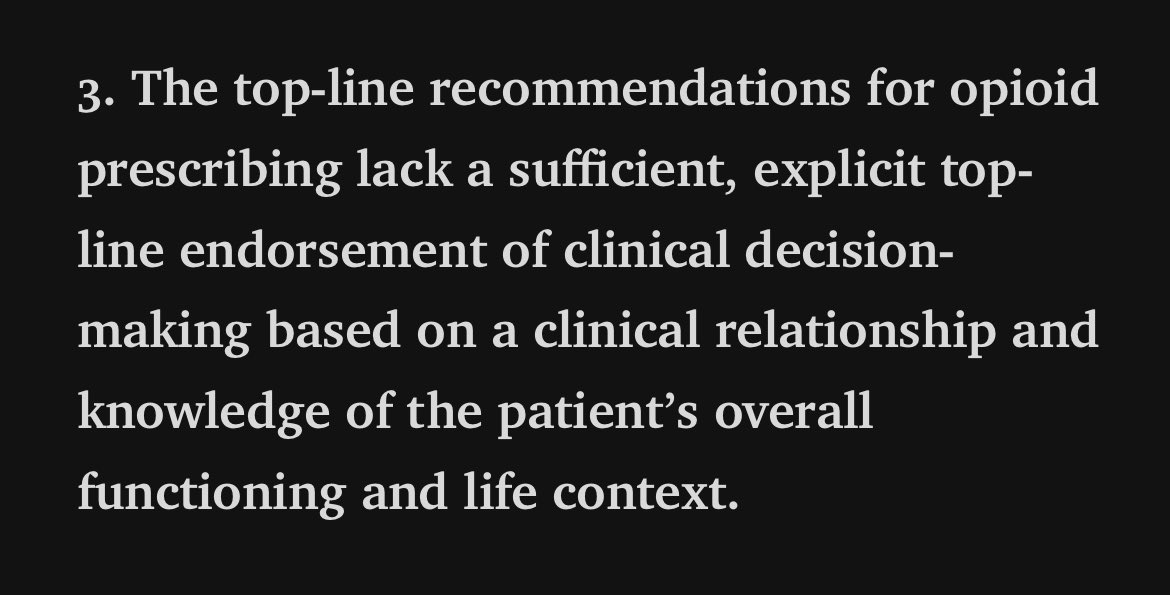
1/It is helpful to see a review of the concerns raised by professionals & patients prior to the publication of the 2016 CDC Opioid Prescribing Guideline - take a look. I will add highlights from my 2016 docket submission. Nearly all issues re-emerged in published research
https://twitter.com/ibdgirl76/status/1468901759682813955
2/My own 2016 submission to CDC’s docket was- as is appropriate- respectful of authorial expertise and good intentions.
But my top line concerns were 4.
1/Inappropriately broad conclusions derived from untestable propositions
stefankertesz.medium.com/considering-cd…
But my top line concerns were 4.
1/Inappropriately broad conclusions derived from untestable propositions
stefankertesz.medium.com/considering-cd…

2/ CDC’s Dose-related recommendations prioritized *relative* risk over *absolute* risk, and minimized consideration of interaction of risk and protective factors -
This is different from approaches applied to nearly all other risk evaluations in medicine (eg NSTEMI, A-fib)
This is different from approaches applied to nearly all other risk evaluations in medicine (eg NSTEMI, A-fib)

3/The top-line recommendations lacked sufficient & explicit top-line recognition of the need to decide on care based on knowledge of overall patient life and functioning.
Note: DEA is investigating & prosecuting from the same narrow viewpoint
Note: DEA is investigating & prosecuting from the same narrow viewpoint

4/Urine drug testing and 3-day limits created brightline regulatory and legal targets (as indeed happened), but were tethered to modest data (the initial Rx duration actually IS associated with continued receipt, if one recognizes the limitations of that data) 

5/The reason for concern at the time was the expectation, denied by the text of the Guideline itself, that the numeric thresholds would be given “regulatory force”.
Today, payers, Medicare, OIG and DEA agents use the Guideline that way. Reasons for hope ?
Today, payers, Medicare, OIG and DEA agents use the Guideline that way. Reasons for hope ?

6/First the Guideline is being rewritten and the experts advising the CDC include members of the affected communities like @speakingabtpain , experts who have stuck their neck out for patients like @BethDarnall and others I deeply respect. They are clear cdc.gov/injury/pdfs/bs…
7/it is now accepted: with opioid Rx/capita at the level of 1992..
what sustains our crisis is *not what started it*
I wrote that line in late 2016 for “Turning the Tide or Riptide” - which became the most downloaded in the history of @SubstanceAbuseJ
tandfonline.com/doi/full/10.10…
what sustains our crisis is *not what started it*
I wrote that line in late 2016 for “Turning the Tide or Riptide” - which became the most downloaded in the history of @SubstanceAbuseJ
tandfonline.com/doi/full/10.10…
• • •
Missing some Tweet in this thread? You can try to
force a refresh








